Chronic acromioclavicular dislocations
This is a condition in which the acromioclavicular dislocation has not been repaired/dislocated for more than a few months.
Preface:
Treatments for acromioclavicular dislocations varies in every medical institute because many patients do not have severe symptoms without difficulties in their day-to-day life. Even orthopedic surgeons tend to offer conservative treatments. However, there are some patients who suffer from pain around the joint. I would like to introduce a new procedure which is performed for those who have discomforts due to the dislocation.
Please listen to the interview with the patients who were diagnosed chronic acromioclavicular dislocations at my outpatient clinic. Please note that the audio has been modified.
Surgical procedure:
Illustration 1 shows the dislocation of acromioclavicular. Chronic acromioclavicular dislocation is a dislocation which happened a while ago, therefore, the procedure for an acute dislocation (Illustration 2) is not applicable. So, what should we do?
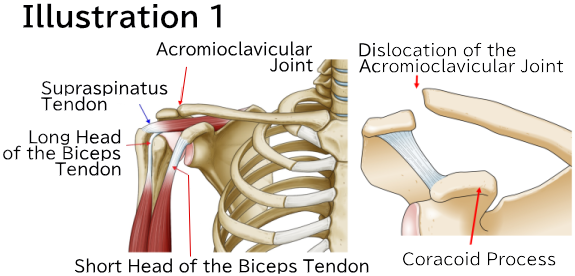
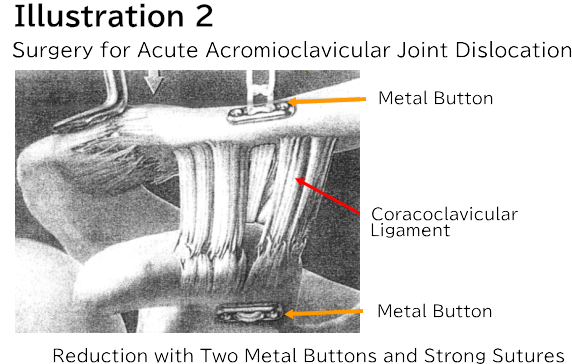
I found that it is crucial to perform a coracoclavicular ligament reconstruction using autologous semitendinosus tendons to clamp acromioclavicular joint and coracoid process.
Illustration 3 shows the procedure for chronic acromioclavicular dislocation.
The procedure starts with making tunnels on the acromioclavicular and the coracoid process to put the autologous semitendinosus tendons to tie the two joints. The thread made with tendons stays screwed until it adheres to the joints. After that, these two joints are clamped with the thread and two end-buttons as in the treatment for acute dislocation. Finally, the edge of autologous semitendinosus tendons is fixed onto the acromion (Illustration 4).
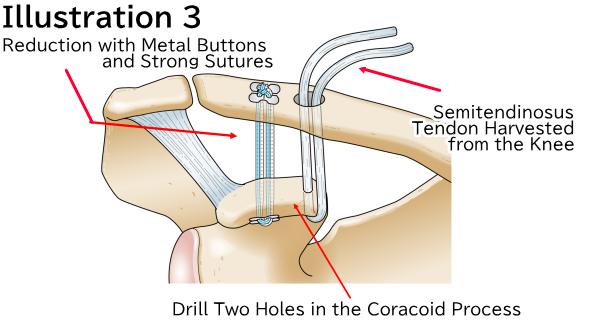
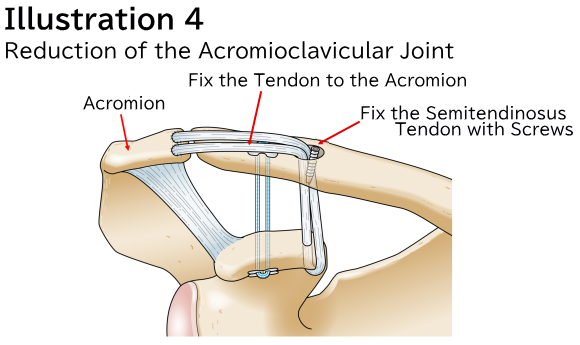
Outcomes:
It will take time to restore a range of motion, however, this can release shoulder pain and you may be able to return to sports.
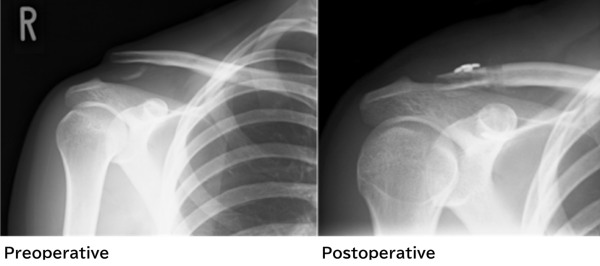
Our team has published the results in the magazine called “Orthopaedic surgery No.77” in April 2020, Nankodo. The title is “Coracoclavicular Ligament Reconstruction Using Semitendinosus tendon Graft Augmentation and Titanium Implants for Chronic Acromioclavicular Joint Dislocations”.
https://webview.isho.jp/journal/detail/abs/10.15106/j_besei77_46
Complications:
Fracture in acromioclavicular and coracoid process
Recurrent dislocations
Infections
Summary:
- Potential treatment for chronic acromioclavicular dislocation
- Coracoclavicular Ligament Reconstruction can be a potential treatment for the said injury which uses semitendinosus tendon graft and metallic end-buttons
Journal of Shoulder and Elbow Surgeryについて
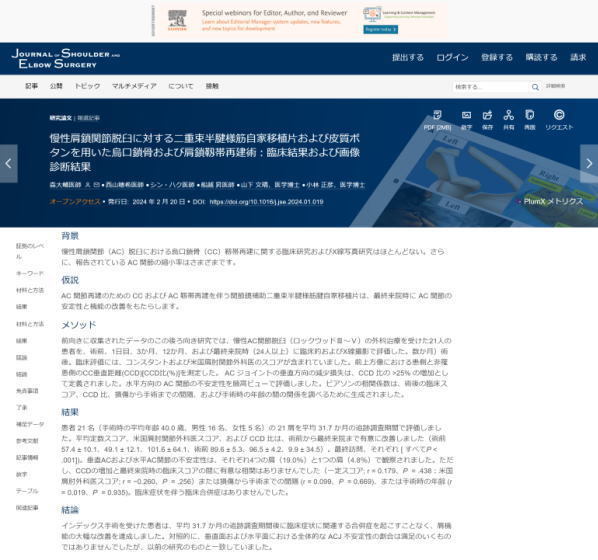
こちら
https://www.jshoulderelbow.org/article/S1058-2746(24)00103-4/fulltext
からどなたでも無料でダウンロードできます。
英文で書かれていますがもし宜しければ目をとおしてください。
Shoulder Diseases

We provide explanations for various shoulder conditions. Please use this as a general guide to determine which condition may apply to you.
- Common shoulder injuries by age group
- To those who neither have frozen shoulder nor rotator cuff tears
- Throwing Shoulder Disorder
- Rotator Cuff Tears and Rotator Cuff Injuries
- Recurrent Shoulder Dislocation
- Frozen Shoulder
- Shoulder Dislocation
- Acromioclavicular Joint Dislocation
- Chronic Acromioclavicular Joint Dislocation
- Frozen Shoulder
- Calcific Tendinitis of the Rotator Cuff
- Primary Degenerative Shoulder Arthritis
- Rotator Cuff Tear-related Degenerative Shoulder Arthritis
- Non-traumatic Shoulder Instability
- Biceps Tendon Injuries
- Surgical Trends for Throwing Shoulder in Baseball Players
